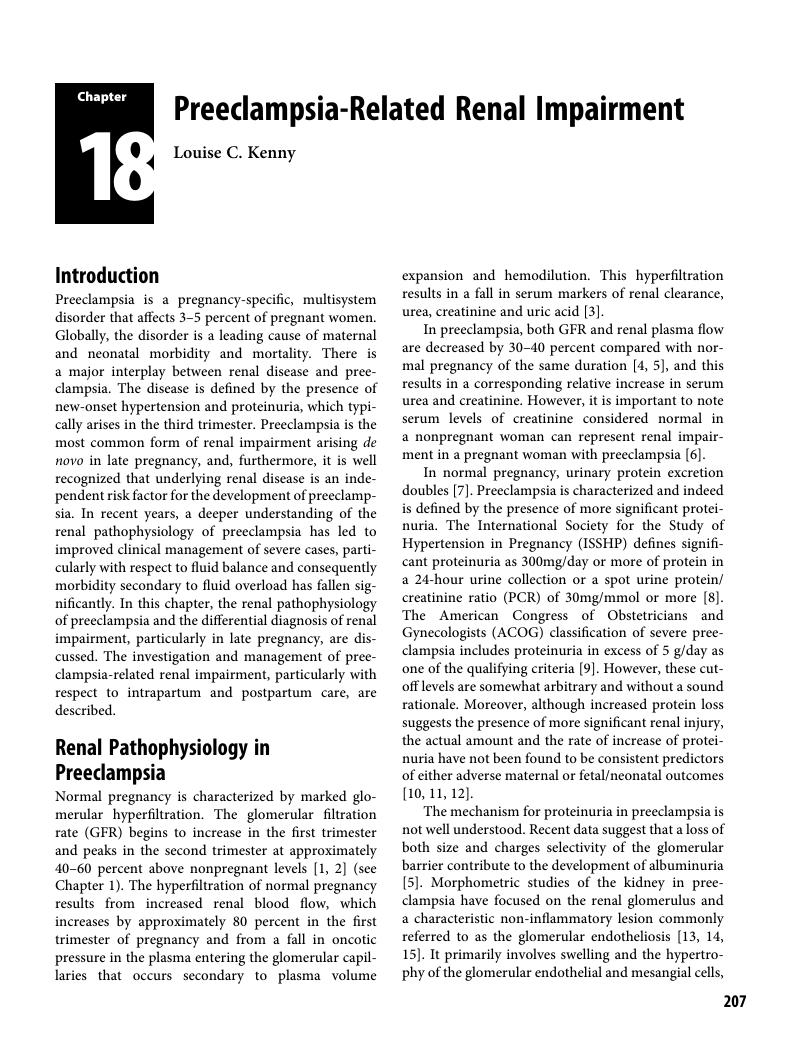Book contents
- Renal Disease in Pregnancy
- Renal Disease in Pregnancy
- Copyright page
- Contents
- Contributors
- Preface
- Section 1 Physiology
- Section 2 Prepregnancy Care
- Section 3 Antenatal Care
- Section 4 Postpartum
- Section 5 Special Conditions
- Section 6 Acute Kidney Injury
- Chapter 17 Acute Kidney Injury in Pregnancy
- Chapter 18 Preeclampsia-Related Renal Impairment
- Chapter 19 Renal Biopsy in Pregnancy
- Appendix: Consensus Statements 2017
- Index
- References
Chapter 18 - Preeclampsia-Related Renal Impairment
from Section 6 - Acute Kidney Injury
Published online by Cambridge University Press: 19 May 2018
- Renal Disease in Pregnancy
- Renal Disease in Pregnancy
- Copyright page
- Contents
- Contributors
- Preface
- Section 1 Physiology
- Section 2 Prepregnancy Care
- Section 3 Antenatal Care
- Section 4 Postpartum
- Section 5 Special Conditions
- Section 6 Acute Kidney Injury
- Chapter 17 Acute Kidney Injury in Pregnancy
- Chapter 18 Preeclampsia-Related Renal Impairment
- Chapter 19 Renal Biopsy in Pregnancy
- Appendix: Consensus Statements 2017
- Index
- References
Summary

- Type
- Chapter
- Information
- Renal Disease in Pregnancy , pp. 207 - 215Publisher: Cambridge University PressPrint publication year: 2018

